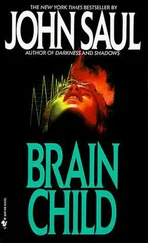Psychology needs epidemiology to ensure that what it has observed in a small selected sample of subjects can be found elsewhere, at another time. These are complementary, rather than conflicting disciplines, each fulfilling its function at different times in the research process. Between these two disciplines, there is a space to create a median approach: developmental psychopathology, in other words, the developmental approach to psychopathological and maladaptive phenomena. Although this approach is recent, it is already 40 years old and aims to integrate models from various fields (such as genetics, neuroscience, developmental psychology and systems theory) to inform research on the relevant processes of normal and atypical development. These developmental processes are reciprocal and transactional. Major questions structure this approach.
1.5. Childhood and culture, anthropological approaches 1.5. Childhood and culture, anthropological approaches The vast majority of research in the field of developmental psychology suffers from a strong sampling bias: 91% of the studies focus on children in wealthy, industrialized, democratic Western societies; moreover, even in these societies, children from the middle and upper classes are overrepresented 1 . Work in anthropology and cross-cultural psychology allows us to overcome these knowledge limitations through two approaches: a depth or precision approach, which often relies on detailed and deeply contextualized ethnographic data, typically from one society, and a breadth or size approach, which relies more on experimental data from standardized tasks deployed in many different societies. These two approaches are complementary, each with its own strengths and weaknesses (see Amir and McAuliffe (2020)).
1.6. Childhood and family in history 1.7. Adolescent development and its contemporary evolution 1.8. The family and its contemporary evolution 1.9. Social class, family income and poverty 1.10. Parenting and parenting styles: how do we find the “right balance”? 1.11. Maternal employment in early childhood 1.12. Child care 1.13. Ranking among siblings 1.14. Sibling size 1.15. Twins
6 2 The Fetus and Fetal Life2.1. Conception and medically assisted procreation: children born through medically assisted procreation 2.2. The issue of genetic screening 2.3. Knowledge of the child’s sex 2.4. The sensory and psychological functioning of the fetus 2.5. Stress and maternal psychopathology 2.6. Prenatal exposures 2.7. Microbiota
7 3 Perinatal Care and the Infant3.1. Perinatal care 3.2. The infant stage (0–2 years)
8 4 What’s New in Cognition?4.1. The child’s brain 4.2. The question of universality 4.3. The theory of mind 4.4. Metacognition 4.5. Mirror neurons 4.6. Embodied cognition 4.7. The issue of programming, “starter kits”, neuroplasticity and the need for an integrative approach 4.8. Vygotsky and the zone of proximal development model 4.9. Contributions from the mother and father 4.10. Intelligence, its definition and measurements 4.11. The question of the “drop in level” of French children 4.12. Children with high potential (“giftedness”) 4.13. Learning disabilities, the “dys” disorders 4.14. Creativity 4.15. Moral development 4.16. Language
9 5 Attachment 5.1. The concept of attachment 5.2. The biological bases and correlates of attachment 5.3. The mother’s response to the need for attachment 5.4. The father and attachment 5.5. The concordance between attachment types 5.6. Paternal behavior 5.7. Sibling attachment 5.8. Attachment to objects 5.9. Attachment and child care 5.10. Attachment disorders 5.11. Attachment, the individual and the family 5.12. The character (or temperament) of the individual 5.13. Attachment and the child’s gender 5.14. Attachment in adolescence 5.15. Attachment and the Internet 5.16. Attachment and risk taking 5.17. Attachment and addictions 5.18. Attachment and transgression 5.19. Attachment, antisocial behavior and hyperactivity
10 6 The Differences between Boys and Girls, Gender and Stereotypes 6.1. Developmental data 6.2. Mathematics, spatial skills and stereotypes 6.3. Risk taking, risk perception and stereotypes
11 7 Health, Disease and Mortality7.1. Health behaviors 7.2. The issue of vaccination 7.3. The age 4 health check 7.4. Laterality 7.5. Child size 7.6. Vision and myopia 7.7. Physical activity 7.8. Eating behavior 7.9. Anorexia 7.10. Obesity 7.11. Sleep 7.12. Dreaming 7.13. Consumption of psychoactive products 7.14. Children’s road safety 7.15. Emotions, emotional development and emotional intelligence 7.16. Hyperactivity 7.17. Suicide 7.18. Autism 7.19. Mortality
12 8 Socialization and Antisociality8.1. Lying 8.2. Lying in parents 8.3. Antisociality 8.4. Abuse 8.5. Sexual abuse 8.6. Exposure to domestic violence 8.7. Foster care 8.8. Parental usage of psychoactive substances 8.9. Discord and separation of parents 8.10. Peer influence
13 9 Activities and Leisure 9.1. Play: from act to thought 9.2. Sports activities: Homo Ludens… Citius, Altius, Fortius… Bread and games… 9.3. The digital child and the issue of screens 9.4. Video games 9.5. The use of telephones 9.6. Social networks (TikTok, Snapchat, Facebook, Instagram, etc.) 9.7. Music
14 10 Emerging Issues10.1. Children living in same-sex parent families 10.2. Homeless children 10.3. Migrants 10.4. Children of military personnel 10.5. Disaster psychology (wars, bombings, tsunamis, earthquakes) 10.6. Political influences 10.7. The environment (neighborhood, nature, city) 10.8. Cyberbullying 10.9. Covid-19
15 Conclusion C.1. Awareness of the early influences (positive and negative) of the prenatal and postnatal (fetal, microbiota) environments C.2. Early development of certain perceptual and cognitive skills C.3. New concepts in the field of cognition C.4. The need to develop an integrative approach C.5. A spiral causality produced by interactions C.6. At the heart of self-endangerment: the lack of sensitivity to loss C.7. Gender differences, gender and stereotypes C.8. The family environment, again and always C.9. Historical developments C.10. New research themes generated by societal developments
16 Appendix: Definitions of Some Concepts Used in this BookA.1. Phylogenesis/ontogenesis A.2. Factor/marker A.3. Epigenetic factors A.4. Externalized and internalized behavioral disorders
17 References
18 Index
19 End User License Agreement
1 Chapter 1 Table 1.1. Average age at end of education in France Table 1.2. Average age of mothers at first child in France
2 Chapter 4Table 4.1. Historical trends in average reading scores
3 Chapter 7Table 7.1. Experimentation with tobacco, alcohol and cannabis and first drunkenn...Table 7.2. Usage of psychoactive products among high school students in 2018 and...Table 7.3. Historical trends in child road deaths by mode of road useTable 7.4. Historical trends in suicideTable 7.5. Children under one year, deaths per million, all causesTable 7.6. Latest mortality data (year 2016)Table 7.7. Historical trends in mortality among children aged one to four years Table 7.8. Historical trends in mortality of children aged five to nine yearsTable 7.9. Historical trends in mortality among children aged 10–14 yearsTable 7.10. Historical trends in mortality among 15–19-year-olds
4 Appendix Table A.1. Historical evolution of the number of French subjects by age group
1 Chapter 7Figure 7.1. Regular usage of alcohol, tobacco and cannabis by French school leve...
2 Chapter 8Figure 8.1. The concept of “flocking”. For a color version of this figure, see w...
1 Cover
2 Table of Contents
3 Dedication
4 Title Page Health and Patients Set coordinated by Bruno Salgues Volume 3
Читать дальше












